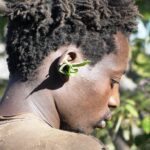The Green Mamba (Dendroaspis angusticeps) was described by Sir Andrew Smith in 1849 from animals collected from Natal.
Taxonomy
The Latin name angusticeps comes from “angustus” meaning narrow and “ceps” an abbreviation for head – narrow head. Surprisingly, many years back the Black and Green Mamba were considered to be the same species and were thought of as colour variations. Some theories included that young mambas were green, turning darker and almost black as they age. Another theory is that males were black and females green or that mambas that lived in the sun turned dark and those in thick coastal forests and didn’t see much sun stayed green. It wasn’t until 1946 when the Fitzsimons brothers noted the differences between the two species and revived Günther’s 1846 name Dendroaspis polylepis (many-scales) for the Black Mamba and kept Dendroaspis angusticeps for the Green Mamba.

Green Mamba left vs Black Mamba right. Green Mambas usually have 19 midbody scale rows whereas Black Mambas have 23-25.
General description
The Green Mamba is an attractive bright green snake, with velvety scales and may have scattered yellow scales across the body. The underside is light green to yellowish. Juveniles are often darker turquoise with green heads and light olive-green eyes. As is the case with most green pigments in nature, damaged scales or dead green mambas will start turning blue and there are infrequent reports of blue Green Mambas. The maximum length of a Green Mamba is around 2.5 meters although they are seldom encountered over 2m. Juveniles hatch at around 30-40 cm and grow rapidly.
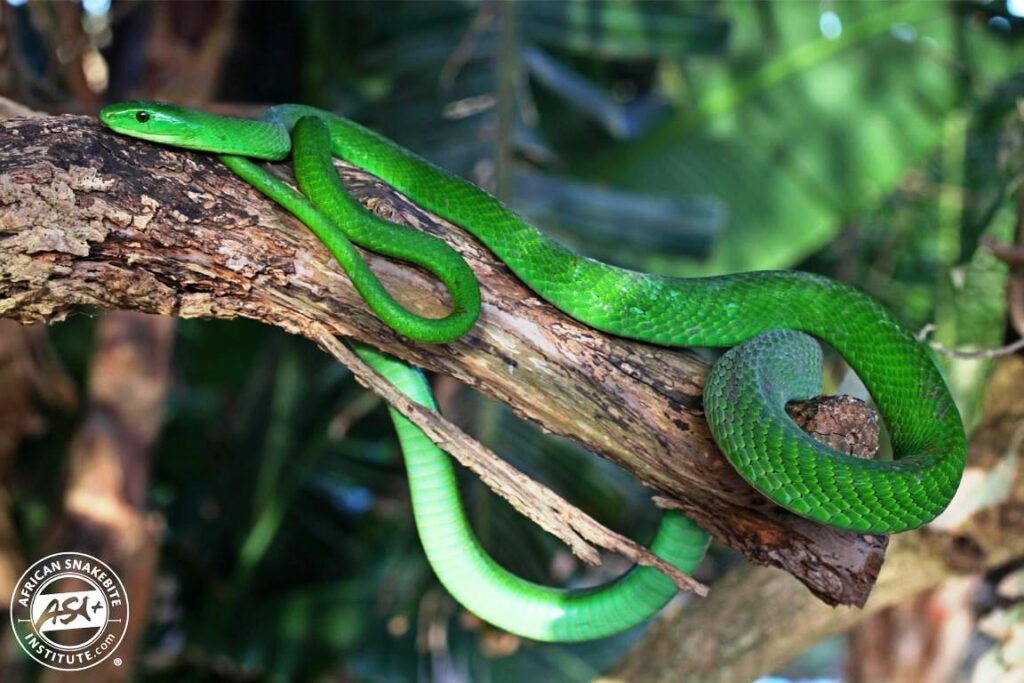
Green Mambas are bulky green snakes with velvety scales and a green belly.
Mating behavior
Green Mambas are known to engage in male combat at the start of the breeding season. From around April, we start seeing males engaged in combat, usually on the ground, wrapped around one another with their heads in the air, attempting to push the other males’ heads down and show dominance. The dominant male will then move off and mate with the female who will be nearby. Mating takes place from April to June and is usually performed in a tree with the tails of the two snakes hanging down and lightly wrapped around one another. The female lays eggs in midsummer around December and the babies hatch between March and April.
This is a docile snake and is not nearly as nervous and unpredictable as the Black Mamba. It seldom gapes the mouth in a threat display and prefers to move off into thick vegetation if disturbed. It is an arboreal (tree-living) snake, only venturing to the ground to move between trees, bask in a sunny spot, or chase prey. At night they may sleep curled up on branches or in the hollow of a dead tree stump. They prey largely on birds, small rodents, and occasionally chameleons.
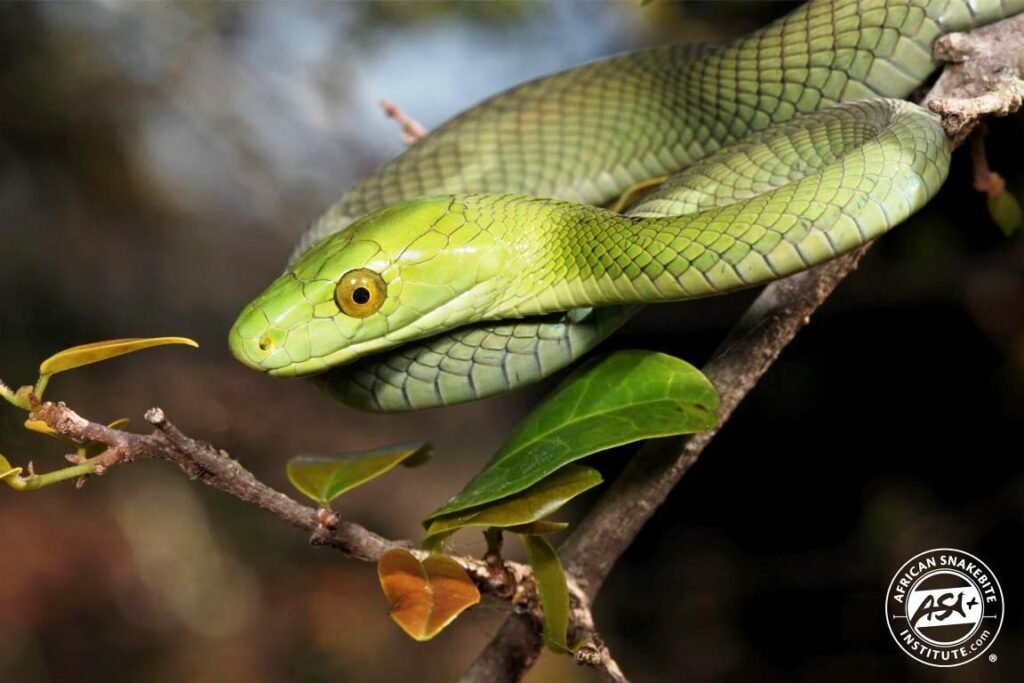
Juvenile Green Mambas hatch around March-April and are olive to turquoise, usually with a lighter green head and large olive eye.
Distribution of Green Mambas
Green Mambas are an east coast species, occurring from around Port St Johns in the Eastern Cape along the coast into KwaZulu-Natal eastward into Mozambique, and north into East Africa. In South Africa, they are usually found within 3-5 km from the sea, but into northern KwaZulu-Natal, they may extend inland as far as 45 km. In Mozambique, they largely hug the coast but do extend inland around Vilankulos and extend into the thick forests around the Zimbabwean Eastern Highlands. They are also known inland in Malawi but stay coastal in Tanzania and Kenya. This snake prefers tropical climates of coastal forest or moist savanna and savanna forest. It is not found in dry lowveld habitats such as the Kruger National Park, Eswatini, or Zambia and many people mistake the Boomslang or a selection of harmless green snakes in the genus Philothamnus for the Green Mamba.
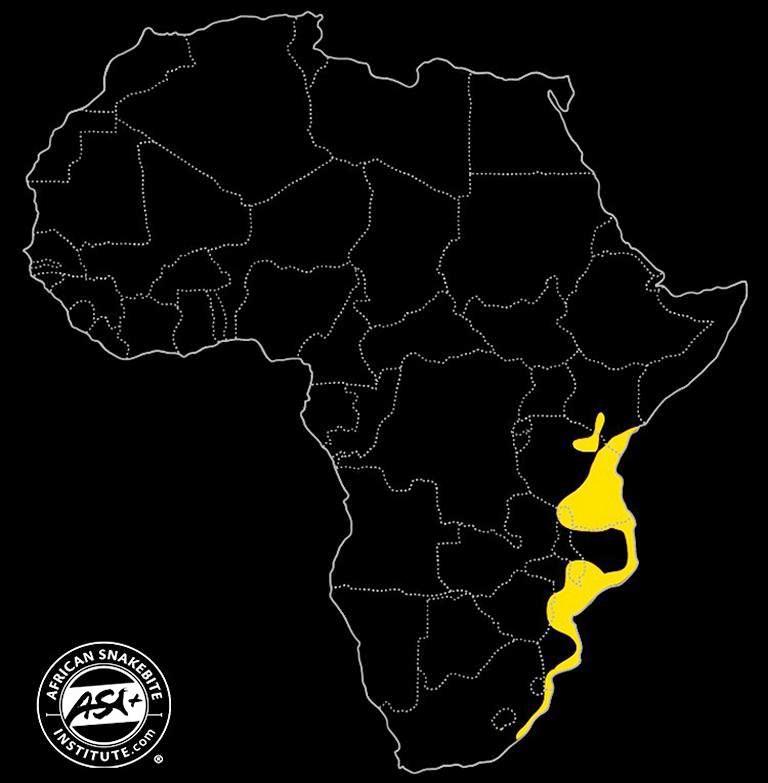
Distribution map of Green Mambas in Africa.
The venom of Green Mambas
The venom is considered potentially lethal and is known to have some neurotoxic properties that may affect breathing. However, recent bites have all shown decent swelling and limited neurotoxic effects, suggesting that venom is a mix of neurotoxic and cytotoxic proteins. As this snake is docile, it is unlikely that the average person would get bitten. However, in the event of a bite, the victim should be taken to the hospital immediately. Fatal bites from the Green Mamba are rare.
Are Green Mambas dangerous?
This is a beautiful, docile snake that poses little danger to the average person. They are best left alone and admired. However, if a Green Mamba does end up in your house or garden and poses a threat to humans or pets, use the ASI Snakes App to find a nearby snake remover and get the snake relocated to a safer area.
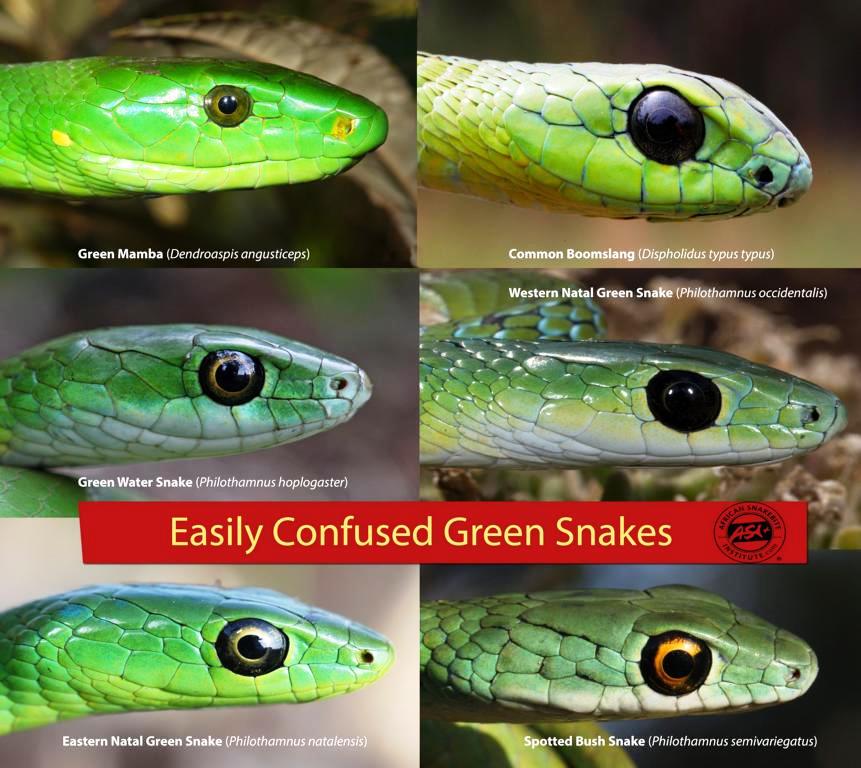
Green Mambas are easily confused with the Boomslang or a selection of other harmless green snakes. With some experience, you can tell these snakes apart based on head profile, eye color, and distribution. You can read more on the identification of green snakes here.
_________________________________________________________________________________________________________
Text and all photos at this article © African Snakebite Institute. The professional background and contact information of the author of this article, Johan Marais, can be found here.
Further readings about Snakes of Southern Africa on this website:
About snake home ranges and territories
Snake Season in Southern Africa
Preventing Snakebite in Southern Africa
Field dressing and cooking a puff adder
Top ten rare snakes of Southern Africa
Small black snakes of Southern Africa
Traditional Remedies for Snakebite
.



